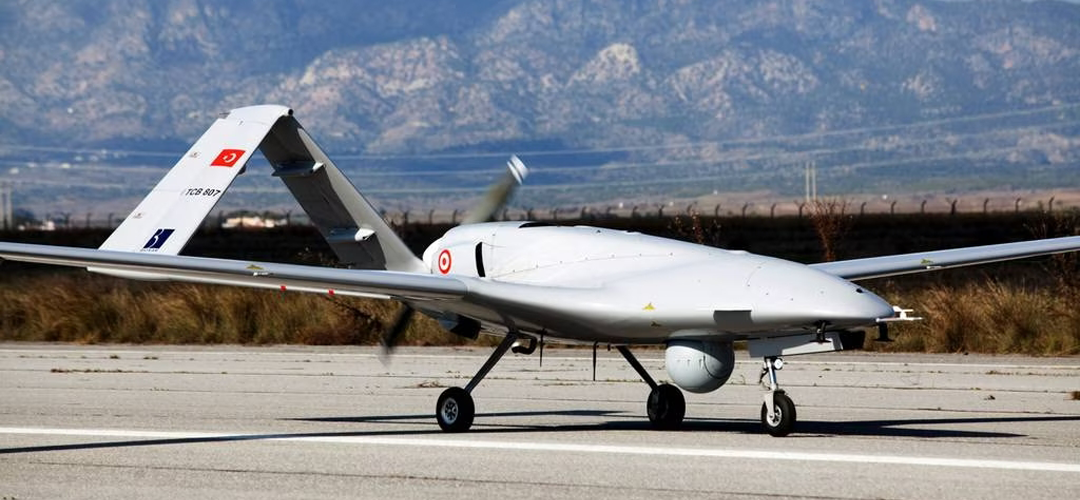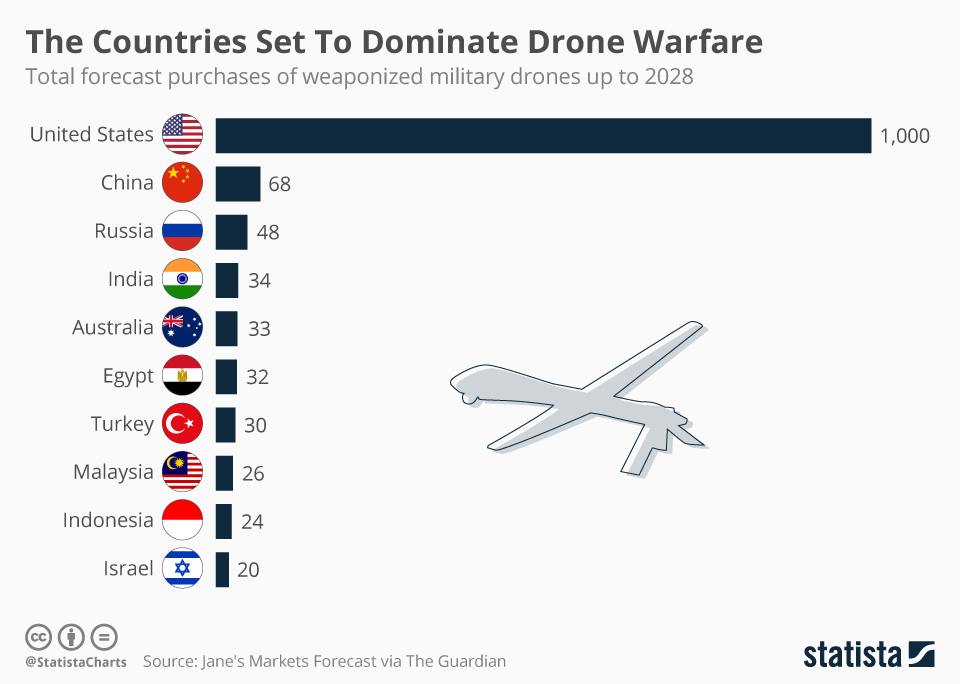Redefining Drone Warfare?
February 11, 2023 | Expert Insights

Like the ubiquitous Kalashnikov assault rifle that changed the face of modern guerrilla warfare, the Turkish family of armed drones are doing the same to the tactical battle area (TBA) across the globe. These silent yet deadly platforms provide an affordable yet highly effective all-weather weapon system to dominate the battle area under the most demanding conditions at a fraction of the cost charged by western arms manufacturers.
Does it mark a levelling of the technological playing field between the powerful military-industrial complexes of the developed world and the modest efforts of the developing world?
Background
For more than a decade, the American Reaper class of unmanned aerial vehicles dominated the public narrative as they reached out to the remotest corners of the globe to strike at U.S. adversaries. Piloted by technicians sitting in air-conditioned containers half a globe away in distant Nevada deserts, they represented the best of western technology, a coming together of aerospace, satellite communications, GPS and precision-guided munitions plugged into the latest in optronics.
Justifiably, this technology was dished out very carefully to the closest American allies, and while the rest of the world gaped in awe, many countries got down to creating their own version of armed drones.
The result was the indigenous and cost-effective Turkish TB2 drone considered by many as a game changer if one goes by its battlefield performance in Nagorno Karabakh, Libya and Syria during the last few years and recently in Ukraine. Olena Zelenska, an influencer with 2.3 million followers on Instagram and the wife of Ukrainian President Volodymyr Zelensky, wrote on Instagram, " The Turkish word Bayraktar - meaning a 'Standard-bearer' - has become a household name in Ukraine in the last few days. These drones help us to defend our country from invaders.”
While Nazi Germany's V1 'Flying Bombs' could stake a claim as the first drones to be used in actual combat, these were actually dumb projectiles without the means of autonomous or remote guidance like their modern descendants.
The drone market has been cornered largely by the U.S. and Israel, with Israel accounting for nearly 41 per cent of the drone exports between 2001 and 2011 (Stockholm International Peace Research Institute). While India has been working on armed drones for decades, it still relies on Israeli UAVs to equip its frontline units. It is also in discussion with the U.S. for high-endurance armed drones for the Army and the Navy.\

Analysis
Bayraktar TB2 is a medium altitude long endurance (MALE) attack drone used for reconnaissance, surveillance and ground attack.TB2 has proven its efficacy with over 110,000 operational flight hours and holds the record for endurance with (27 Hours 3 Minutes) and for altitude with (27.030 feet)
This unmanned aerial combat vehicle was unveiled to the world in 2020 during the war between Azerbaijan and Armenia for the disputed enclave of Nagorno Karabakh. It successfully took out the Armenian Osa-AKM air defence installations and even targeted individual tanks and artillery gun emplacements, rendering most existing air defence systems useless.
Founded in 1986 by Baykar Makina, it took three decades for the Private Turkish Défence company to develop the Bayraktar TB2. Although officials claim that TB2 is completely a Turkish product, time and again, the wreckage from shot downed drones says otherwise. Investigations of downed Bayraktar TB2 have revealed components sourced internationally, including U.S., UK, Australia and Germany. Parts sourced from U.S. companies include a GPS receiver made by Trimble, an airborne modem/transceiver made by Viasat, and a Garmin GNC 255 navigation radio. According to the statement released by Garmin, their navigation radio was never intended or designed for drones.
This is not the first instance of a General Purpose Technology (GPT) being re-engineered as a disruptive technology. Today, lethal weapons can be made from homemade appliances. A homemade explosive-carrying platform can be prepared with an off-shelf drone, smartphone, commercial face recognition software and GPS. These general-purpose components are usually exempt from any country's export policy, and this loophole is taken advantage of by diverting their intended purpose to military use.
One such recent example is Drones used by the Russian military to attack Ukraine's infrastructure containing components made from home electronics in Japan. Relays which are used in appliances such as refrigerators and washing machines were found in the drone with the barcode “Made in Japan.” Considered the most valuable player in the Ukraine-Russian war, TB2s were used in search and destroy missions behind Russian lines.
While in Ukraine, drones may be hailed as 'defenders of nations,' the same technology in the wrong hands can wreak havoc. The devastating use of cheap, home-assembled drones to inflict heavy damage to Saudi Arabian oil assets by Houthi rebels, causing millions of dollars of damage, is illustrative of this possibility.
Assessment
- Drones are transforming warfighting as never before; they are cheap and easy to manufacture from commercially available components, do not endanger the pilot, and provoke much less political opposition in democratic countries. They have been at the forefront of battlefield action in most recent wars and will continue to dominate the TBA even as manned platforms become more complex and expensive and highly trained fighter pilots irreplaceable. The future is in drones.
- The real concern is that with a little effort, this technology can be acquired by even mid-level tech powers using off-the-shelf components. As the civil war in Yemen has shown, non-state actors are increasingly adept at using even small drones for targeted assassinations. Therein lies the real danger with the weapon whose proliferation is almost impossible to stem.
- On the other hand, they represent the ability of technology to even out the odds in a battle, bringing to reality the story of David versus Goliath.








Comments